
By David C Forman, bestselling author “Fearless Talent Choices”
WHY SHOULD YOU CARE?
The opportunity for HR to provide strategic value is greater than ever before. The times demand it because of unrelenting change and the uncertain futures that we all face. It is vital to focus on the essence of the value we can provide or else it will get lost in the haze of ambiguity and turbulence.
“I guess I lost my way. There were oh so many roads. Deadlines and Commitments. What to leave in, what to leave out?”
Bob Seger
Poignant phrases from Bob Seger’s epic song about growing up and knowing whom to trust are remarkably relevant to the history of a profession that is asked to define itself once again. Since its founding in the early twentieth century, HR has fulfilled many roles. Early roles were mainly administrative because that was what was needed in an economy based on people and machines performing routing tasks again and again. The Production Line was King, the economy prospered, and people had access to affordable products, cars and homes that were previously unattainable. HR’s job was to help keep the production line humming and was basically a record-keeping function, often called the Personnel Department.
By mid-century, the economy morphed as conditions and challenges changed. The emphasis shifted to services and informational assets as organizations were required to be more responsive, agile, and innovative. Instead of just following directions, people were now asked to think, make decisions, respond quickly, and even challenge existing practices. The ability to leverage talent became a vital differentiator for successful companies in this era. HR (now called human resources as opposed to industrial relations or personnel) took on more of an operational role in helping to win the war for talent by focusing on how to acquire, engage, develop, and retain the best people.
In the Twentieth First Century, the world has become even more complicated and intertwined. Three factors characterize this new century: Unrelenting change, global interdependence, and uncertain futures. These factors placed an even greater importance on the human potential of organizations to not just survive these challenges but succeed. To do so, HR would need to adapt again, because the operational war for talent model is not sufficient anymore.
Another way to envision this ‘administrative-operational-strategic’ journey for HR over the years is the 4Ps.
- Polite: Listening to employees, being a sounding board, and advocating for employees’ interests. Helping to amplify the employees voice in the organization. This role is particularly vital in countries and cultures that do not have workers councils and other governance vehicles for employee expression.
- Police: Ensuring the laws, regulations and requirements are being followed. Protects the company from lawsuits and poor practices, many of which can be hugely expensive.
- Partner: Working with business leaders to optimize talent practices. Shares responsibility, builds credibility, and forges genuine partnerships
- Player: Being a business leader that optimizes talent and organizational resources to drive results. A player makes it happen, embraces change, and leads the way. Perhaps the clearest evidence of an HR professional reaching the strategic layer of player is this statement from the CHRO of a major global firm:“ I don’t consider myself an HR leader at all. I am a business leader who happens to focus on culture and talent.”
From a timeline perspective, the first two Ps are characteristic of the first 50 years of HR’s growth. Both are still important today, but no longer sufficient to meet the growing and changing demands of organizations in the current marketplace. The Partner role is most often operationalized as an HR Business Partner working hand in hand with business leaders. This is an important step in adding more business value, but it still can be a more passive and reactive role. Given the glaring need to optimize the human potential of organizations today, the goal is for HR professionals, at all levels, to be Players.
The Trifecta: The Essence of HR’s Value (2022)
HR has been expected to do many things, some of which are remnants of the past as opposed to requirements for the future. It is usually hard for a profession to escape its past, and HR is no exception. But given all the roles and expectations over the years, what should be the essence of the value HR can provide in 2022 and beyond?
Jesuthasan and Boudreau (2022) in Work Without Jobs have provided a way to think about work operating systems of the future. They suggest deconstructing jobs into tasks or groups of tasks, and then deciding how best to accomplish these tasks, especially given the advent of advanced technologies and smart systems. Administrative and operational tasks are usually repetitive, independent, and targeted to reducing errors or adding incremental value, and they are often amenable to technological interventions and automated options. Strategic tasks, on the other hand, are often variable, interdependent, involve mental acuity and can result in exponential (not incremental) value. These more complex strategic tasks require human attention, involvement, and judgement to truly make a difference. Strategic contributions are mainly made by Players and fearless leaders in organizations.
The essence of the value HR can provide is a blend of three strategic tasks, and all three must be present in great organizations.
- Build Agile, Responsive and Inclusive Workplaces
- That Unleash Talent at all Levels
- To Drive Meaningful Results and Outcomes
There are several key words that require further explanation. Workplaces today must adjust quickly, be responsive, and open to all. If they are cumbersome, slow, restrictive, and micromanaged, they will fail. Other characteristics of effective workplaces are meaningful purpose, flexibility, learning opportunities, focus on wellbeing, a culture of principles, transparency, and human-centric processes. These qualities provide a context in which trust between employers and employees can not only exist but flourish. The word ‘Unleash’ is intentionally used in contrast to top-down practices that control and restrict the contributions of people. Take the constraints off and remove barriers. ‘Talent at all Levels’ extends the view of human potential to everyone, not just a select group. It is time to opensource organizations so that anyone can contribute, especially those closest to the work and customers. Great organizations hold themselves accountable for results that matter. It is not enough to have a workplace that does the right things for people, these tasks must lead to meaningful results and outcomes. These outcomes could be business results such as increased revenues and profits, or they could be outcomes that positively affect the community, society, and the planet. Great organizations have multiple bottom lines.
The merging of these three factors is called a Trifecta because they all three must exist. If you take one part of the equation away, the system stops working. In the war for talent, for example, the primary emphasis was on bringing in and keeping the best and smartest people. But what happens if these very capable people are placed in a dysfunctional workplace? Remember Enron? This saying captures the same sentiment.
“Even the brightest flower will wither in a barren garden.”
In this case, talent needs to be cultivated in the right garden for it to flourish. If one part of the equation is more powerful than the others, the system gets out of alignment quickly. If, for example, business profits are far more important than guiding the workplace and workforce then the equilibrium is disrupted. It is certainly possible to raise profits by taking drastic measures in the short-term, but this pyrrhic achievement will not endure because the other two parts of the equation (workplace and workforce) do not support it. Similarly, if there are personal benefits for some, they must be available to all and lead to meaningful organizational results. Wellbeing and mindfulness, for example, are not enough by themselves. The three parts of the equation must be balanced and internally support each other.
Final Thoughts
The opportunity for HR to provide strategic value is greater than ever before. The times demand it because of unrelenting change and the uncertain futures that we all face. It is vital to focus on the essence of the value we can provide or else it will get lost in the haze of ambiguity and turbulence. There are ‘oh so many roads.’ The CHRO of a major Fortune 50 company expressed this view perfectly: “Excellence in engineering leads to strong products. Excellence in finance leads to strong financial capabilities. Excellent in HR leads to a great company.”
If history is our guide, we know that HR’s greatest contribution will change as the future presents itself. Especially with the advent of the Fourth Industrial Revolution, smart systems will cause a further deconstruction of HR’s job. There will also be unknown forces that will impact organizations and the global landscape, whether growing international conflicts, security risks, advancing climate change, health threats, disinformation campaigns, or new rules and regulations. Great organizations adapt, and so must HR. Be vigilant, anticipate, and be a ‘lead-time ahead.’ But for now, take the ‘workplace-workforce-results’ road.
Written by: Dave Forman
Future of Work HR Strategy Talent Management
Previous post

- 5616
labelArticles today2022.05.09.
Apple employees openly criticize management over work from home policy
Farai Mugabe, Content & Research, The HR Congress WHY SHOULD YOU CARE?Some employers such as Apple, believe that returning back to the office will result in increased collaboration, employee engagement, [...]
Similar posts

labelArticles today2024.07.24.
AI-Powered HR: Strategic Benefits and Practical Applications

labelArticles today2024.06.24.









Post comments (0)